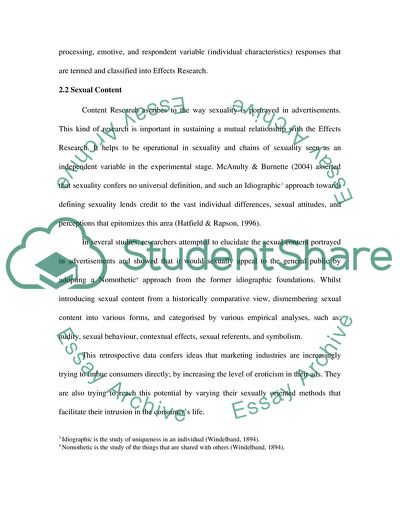Cite this document
(Using a Sexuality in Advertisement Essay Example | Topics and Well Written Essays - 5000 words, n.d.)
Using a Sexuality in Advertisement Essay Example | Topics and Well Written Essays - 5000 words. Retrieved from https://studentshare.org/marketing/1712248-sexuality-in-advertisement
Using a Sexuality in Advertisement Essay Example | Topics and Well Written Essays - 5000 words. Retrieved from https://studentshare.org/marketing/1712248-sexuality-in-advertisement
(Using a Sexuality in Advertisement Essay Example | Topics and Well Written Essays - 5000 Words)
Using a Sexuality in Advertisement Essay Example | Topics and Well Written Essays - 5000 Words. https://studentshare.org/marketing/1712248-sexuality-in-advertisement.
Using a Sexuality in Advertisement Essay Example | Topics and Well Written Essays - 5000 Words. https://studentshare.org/marketing/1712248-sexuality-in-advertisement.
“Using a Sexuality in Advertisement Essay Example | Topics and Well Written Essays - 5000 Words”, n.d. https://studentshare.org/marketing/1712248-sexuality-in-advertisement.


